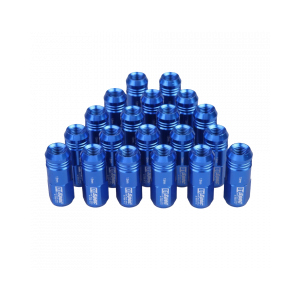semi trailer hub seal
Understanding Semi-Trailer Hub Seals Importance, Types, and Maintenance
Semi-trailers play a critical role in the transportation and logistics industry, serving as integral components for hauling goods across various distances. One of the essential parts of a semi-trailer is its axle and wheel assembly, which includes the hub seals. Hub seals are often overlooked, yet they are vital in ensuring the efficient operation and longevity of a semi-trailer. In this article, we will explore the importance of hub seals, their different types, and maintenance practices to optimize performance.
Importance of Hub Seals
Hub seals are designed to prevent the leakage of lubricants from the wheel hub while also keeping dirt, moisture, and other contaminants out. This dual function is crucial because
1. Lubrication Retention Proper lubrication is critical for the smooth functioning of wheel bearings. If the lubricant escapes due to a faulty or worn-out hub seal, it can lead to increased friction, causing the bearings to overheat and eventually fail. This failure could result in costly repairs and extended downtime.
2. Contaminant Protection Keeping contaminants such as dust, water, and road grime out of the hub assembly helps maintain the integrity of the lubricating grease and the bearings. Contaminated grease can lead to corrosion and wear, affecting the lifespan of the bearings and other components.
3. Safety A malfunctioning hub seal can lead to wheel bearing failure, which may result in wheel disengagement while on the road, posing serious safety risks. Therefore, regular inspections and maintenance of hub seals contribute significantly to road safety.
Types of Hub Seals
There are several types of hub seals used in semi-trailer applications, with the most common being
1. Lip Seals These seals feature a flexible lip that makes contact with a smooth surface (the axle). They are effective in preventing the escape of lubricant and keeping contaminants at bay.
semi trailer hub seal

2. Double-Lip Seals Similar to lip seals, double-lip seals have two contacting surfaces, offering better protection against contaminants. They're often used in more demanding applications where additional sealing is necessary.
3. Tapered Seals Designed to fit into tapering surfaces, these seals are known for their robust design and ability to accommodate slight misalignments in the axle.
4. O-Ring Seals These circular seals are often used in conjunction with other sealing methods. They provide an additional layer of protection against leaks and can be found in various configurations.
Maintenance of Hub Seals
To ensure the longevity and effectiveness of hub seals, regular maintenance is crucial. Here are some best practices
1. Routine Inspections During regular maintenance checks, inspect the hub seals for signs of wear, cracks, or any other damage. Early detection can prevent more significant issues.
2. Lubrication Checks Ensure that the lubricant levels are maintained and that there is no evidence of leakage. If there are signs of lubricant loss, it may indicate a failing hub seal that needs replacement.
3. Replacement Hub seals should be replaced as part of a preventive maintenance schedule, even if they appear to be functioning well. Recommended replacement intervals may vary depending on the manufacturer’s guidelines and the usage conditions of the semi-trailer.
4. Install Properly When replacing hub seals, ensure they are installed correctly to avoid installation-related issues that may compromise their functioning.
In conclusion, hub seals are a fundamental yet often overlooked component in the operation of semi-trailers. By understanding their importance, recognizing the types available, and maintaining them properly, fleet operators can enhance the efficiency and safety of their vehicles, ultimately leading to smoother operations and reduced maintenance costs. Keeping a close eye on these seals can make a significant difference in the overall performance and reliability of any semi-trailer.
-
Understanding the Front Main Engine Seal: Purpose, Maintenance, and Installation
News Jul.29,2025
-
Understanding O-Rings and Seal Rings: Types, Applications, and Custom Solutions
News Jul.29,2025
-
Understanding Crankshaft Oil Seals: Rear Seals, Pulley Seals, and Their Role in Engine Integrity
News Jul.29,2025
-
The Importance of Front and Rear Crankshaft Seals in Engine Performance and Oil Management
News Jul.29,2025
-
Crank Oil Seals: Functions, Types, and Cost Considerations in Engine Maintenance
News Jul.29,2025
-
A Comprehensive Guide to O-Rings and Seals: Types, Materials, and Global Applications
News Jul.29,2025
-
Mastering Diesel and Performance Engine Maintenance: A Guide to Critical Oil Gaskets
News Jul.28,2025
Products categories















